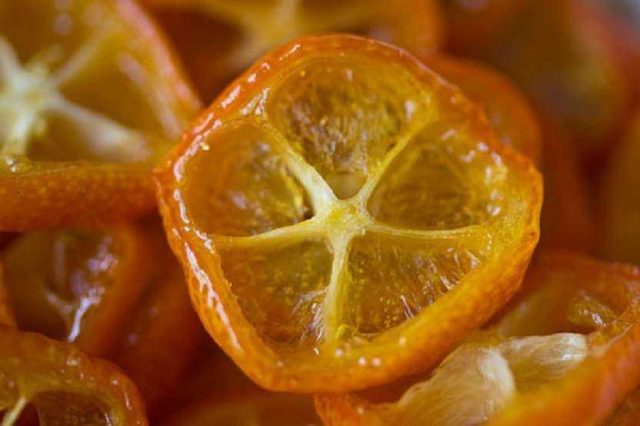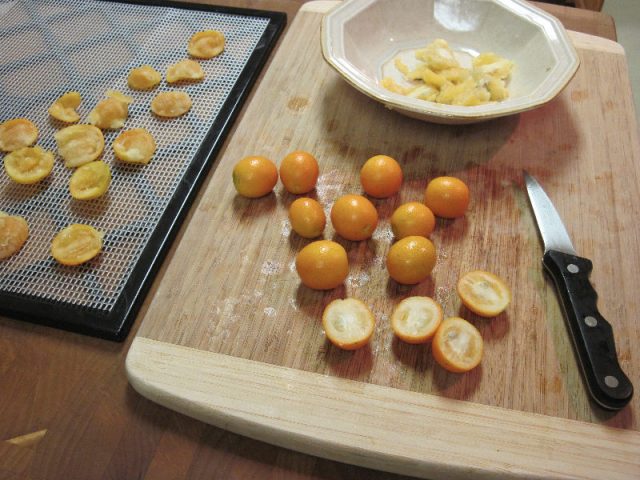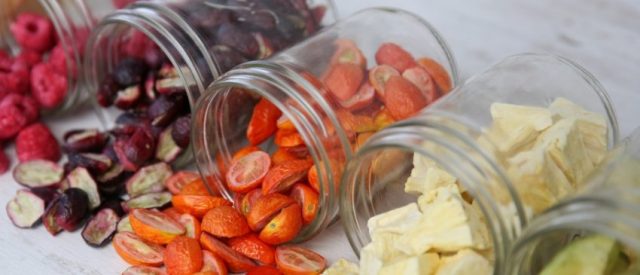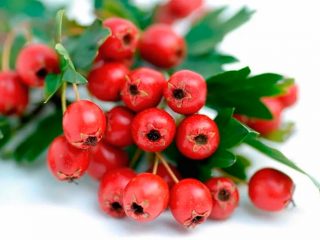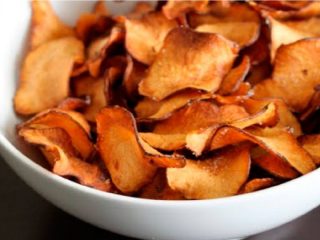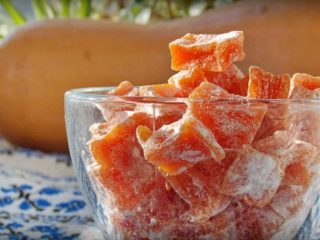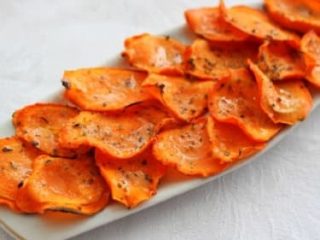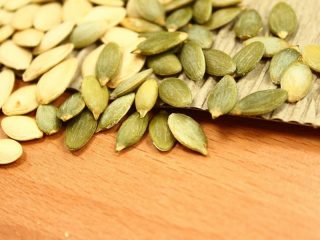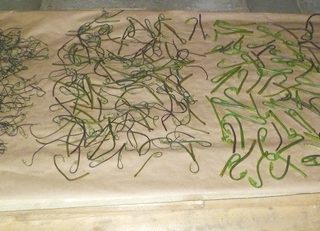Content
Kumquat is a healthy tropical fruit belonging to the citrus group. Outwardly, it looks like an elongated orange. Distinctive features include the possibility of eating the fruit with the peel, as it has a pleasant taste. The beneficial properties of dried kumquat are due to the content of vitamins A, E and fiber.
Composition and nutritional value of dried kumquat
Dried kumquat is a product made using heat technology, as a result of which excess moisture evaporates from the fruit. It is also called fortunenello or Japanese orange. China is considered the birthplace of exotic fruits. They grow on evergreen trees whose height varies from 2 to 5 m.
The main benefit of kumquat is its low calorie content and high nutritional value. Its use is important in winter, when the need for nutrients increases, and fresh fruits are not freely available. Dried kumquat contains a lot of useful components:
- essential oils;
- magnesium;
- polyunsaturated fatty acids;
- vitamins C, E, B and A;
- sodium;
- beta-carotene;
- iron;
- zinc;
- calcium;
- monosaccharides.
How many calories are in dried kumquat?
Dried kumquat is considered a dietary product. The calorie content of dried kumquat per 100 grams is 71 kcal. Despite this, it has the property of rapid saturation.
Contents of the BZHU
Compared to fresh fruit, dried fruit contains 3 times more carbohydrates - 9 g. The low fat content allows the product to be consumed by people who are watching their weight. Protein content per 100 g of product – 2 g.
Types of dried kumquat
There are several varieties of delicacies. In appearance they differ in color. Their beneficial properties are the same. The product may be:
- green;
- yellow;
- red;
- orange.
Yellow and orange fruits are found in wildlife. Dried kumquat green or red is considered artificial. These shades are obtained using dye. To enrich the taste of the product, various additives are used in its production. This does not change the beneficial properties. Most often, sugar syrup or powder is added to dried kumquat.
The taste, appearance and beneficial properties depend on the variety of kumquat. The fruit comes in the following types:
- Meiwa;
- Hong kong;
- Marumi;
- Nagami.
Hong Kong is considered the smallest variety of kumquat. The beneficial properties favor the use of the fruit as food. The tiny fruits have gained particular popularity in China. The most fragrant type of fruit is Marumi. A characteristic feature of Nagami is its oblong shape. This variety is valued in the USA for its beneficial properties. Meiwa has a large and round shape. Its advantage is the absence of seeds.The benefits of this type are especially pronounced when used for medicinal purposes.
How to make dried kumquat
Dried kumquat can be purchased ready-made or made yourself. No special knowledge is required for this. It is necessary to choose the right fruits. Their benefits depend on the maturity and quality of the fruit. The process for preparing the dried product is as follows:
- To create sugar syrup, mix water and granulated sugar in equal proportions.
- The liquid is simmered over low heat for 3 minutes.
- Kumquats are cut into circles, after which they are soaked in the resulting cooled syrup.
- Place the circles on parchment paper and place in an oven preheated to 80 C° for an hour.
- After the set time, the fruits are turned over and put in the oven for another 20 minutes.
On an industrial scale, fruits are dried in a dehydrator or under the influence of sunlight. Most often, sugar is added to the product, which allows it to be used as a dessert, and not instead of a vitamin supplement to food. But even in this form, the fruit, due to its properties, has health benefits.
What are the benefits of dried kumquat?
The beneficial properties of dried kumquat are achieved due to its rich chemical composition. Despite this, it should be consumed in limited quantities. The benefits of the product for the human body are due to the following properties:
- prevention of age-related changes in visual function;
- improving the functioning of the digestive system;
- removal of toxins from the body;
- increasing immunity;
- restoration of metabolic processes;
- stabilization of the nervous system;
- replenishment of energy reserves;
- relief of fungal diseases;
- removing excess cholesterol from the body.
The health benefits are explained by the product’s ability to replenish vitamins. To achieve the desired effect, it is advisable to eat kumquat on a regular basis without overusing it. The beneficial properties of green and red dried kumquat are exactly the same as those of varieties of the product that do not contain dyes. The difference is only in appearance.
What are the benefits of dried kumquat for women?
Reviews from women about dried kumquat indicate the benefits of the product for weight loss. It can be a complete replacement for high-calorie desserts. The substances included in the product have rejuvenating properties. They slow down the aging process and have a beneficial effect on the condition of the skin, nails and hair. Due to the vitamin E content, dried fruit stimulates the reproductive system. The main benefit is the formation of a high-quality egg and stimulation of the growth of the uterine layer. Sexual desire also increases. The beneficial properties of the fruits allow them to be used as a means to stabilize the menstrual cycle.
How to choose and store correctly
When choosing dried fruits, you should focus on their color, shape and integrity of the peel. Minor deformation does not affect the benefit. But in general the surface should be smooth and shiny. Before purchasing, you need to inspect the fruit for mold. Unscrupulous sellers remove plaque from the fruit before serving it on the counter. Because of this, streaks and light spots may be present.
When dried, kumquat can be stored at room temperature. In this case, the beneficial properties are not lost.It is advisable to choose a tin can as a storage container. Placing in the refrigerator extends the shelf life of the product. In this case, you can make supplies for several months. The maximum shelf life is six months.
Use of dried kumquat in cooking
Every corner of the world uses kumquat in its own way. Most often, the product is used as a dessert or as an addition to porridge and salads. The skin has a sweet taste, and the flesh has a slight sourness. The product goes well with spinach, Chinese cabbage and lettuce. A sauce made from kumquat, grated ginger, garlic and honey is very popular. It is served with meat or fish.
Kumquat is often used to make cooling cocktails and warming tea. In the first case, the fruit is combined with mint leaves, banana, kiwi or pear. A fruit mixture of these components can be added to ice cream. The tea combines kumquat with chamomile and honey. This tea is beneficial for nervous disorders and digestive disorders.
Contraindications
Before eating dried kumquat, you should familiarize yourself with the list of contraindications. Like other representatives of citrus fruits, kumquat is characterized by allergenic properties. Therefore, people predisposed to individual intolerance should not try the product. In this case, the benefits of the fruit are questionable. It is also not recommended to use it in the following cases:
- kidney diseases;
- diabetes;
- chronic diseases of the digestive system (ulcers, gastritis).
In the initial stages of diabetes, consumption of fruit in limited quantities is allowed. The benefit for breastfeeding women is questionable. It is better to avoid the product completely. The reaction of the child's body to the presence of this product in the mother's diet can be unpredictable.
Conclusion
The beneficial properties of dried kumquat do not depend on the form in which it is consumed. The product can replace a full meal or supplement any dish with it. The benefits of kumquat will be most pronounced if you eat it 3-4 times a week.
